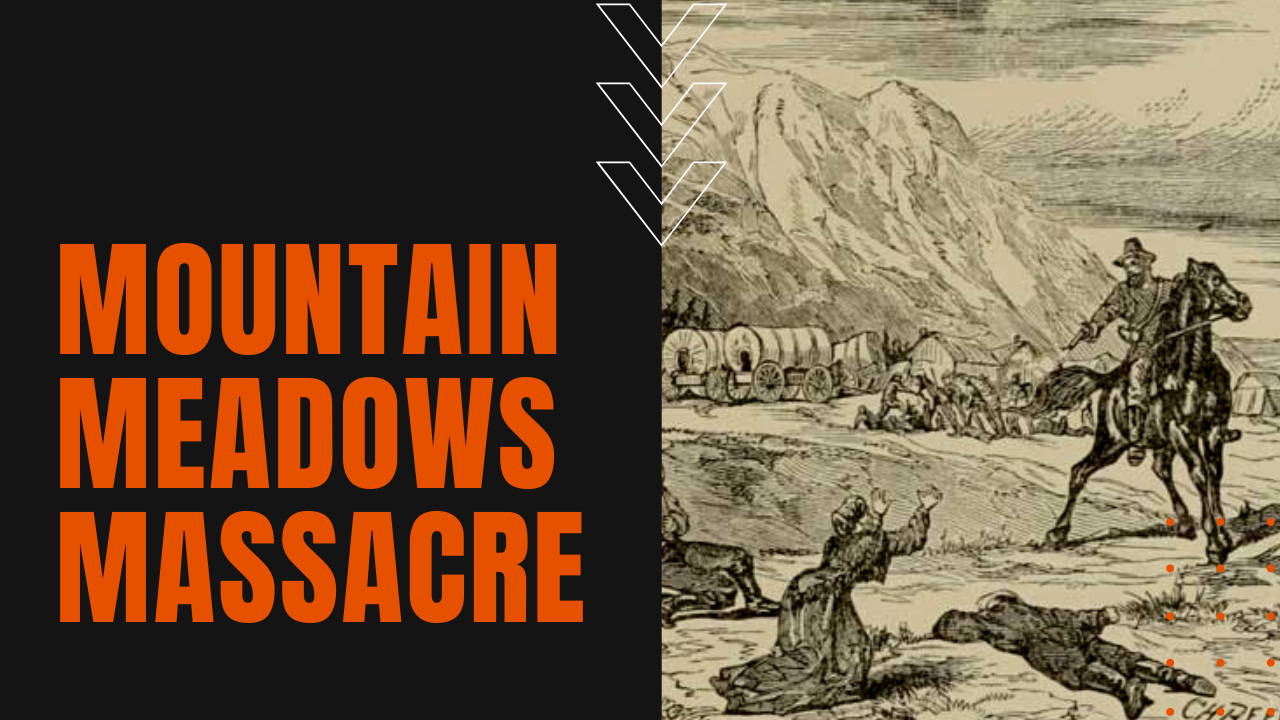Mountain Meadows Massacre: Miscommunication Among Mormons

It had been ten years since Brigham Young had led his Latter-Day Saints west to Utah, away from violent opposition in Missouri, and while the rest of the country wrestled with the question of slavery, Young was determined to build his Mormon kingdom in the deserts of Utah.
While Salt Lake City comprised the second-largest city west of St. Louis, new colonies of Mormons stretched for 300 miles along the Wasatch Mountains. The Mormons printed their own currencies, drove federal officials out of Utah, and publicly announced that plural marriage was part of church doctrine. The practice of polygamy turned many Americans against them, including political leaders in Washington, DC.
Polygamy in Politics
In the election of 1856, the newly-formed Republican Party ran on what they called “the twin relics of barbarism,” calling for the abolition of both slavery and polygamy. The Republicans lost, but the issue of polygamy was kept alive by President Buchanon, in an attempt to deflect attention from the growing issue of abolition of slavery.
In an attempt to snuff out Mormon polygamy, in the summer of 1857, Buchanon sent 2,500 troops to Utah to reassert federal control. At the same time, a lone wagon train entered the southern part of Mormon territory. They were settlers, mostly, families with small children, transiting the warmer Utah route on their way to California and a better life.
On September 7, 1857, the wagon train reached a grassy knoll known as Mountain Meadows, and it was there that some 200 Paiute Indians, encouraged by the Mormons, attacked the wagon train. The immigrants managed to push the Indians back, while the Paiutes encouraged the Mormons to join in the fight to eliminate the pioneers.
Elders sent a message to Brigham Young in Salt Lake City, asking what they should do. One of the men ordered to lead the fighting was John D. Lee, who later claimed that Young’s original order, which he said was in writing, was to kill all the immigrants, which would act to discourage further gentile settlements in Utah. At first, Lee refused to follow Young’s orders on moral grounds, but in the end, John D. Lee decided to yield to Young’s will.
Mormon Massacre at Mountain Meadows
On the morning of September 11th, he rode out to the besieged wagon train under a flag of truce. Lee assured the immigrants that they had the Indians under control, and if they would throw down their arms, the Mormons would escort them to safety.
After the immigrants complied, the order was given to their Mormon escorts to “do your duty.” The Mormons opened fire, each man assigned to shoot the immigrant walking next to him. Lee’s task was to kill the wounded and the sick, riding in a wagon in front of the others, then the Paiutes swept in and finished off the rest. In less than half an hour, 120 people had been butchered by fellow Americans at Mountain Meadows.
Only 17 children were spared since they were thought too young to tell the horrible tale. After a hasty burial of the dead in shallow graves, two days later, Young’s order to let the immigrants go arrived at Mountain Meadows, prompting John D. Lee to ride for Salt Lake City to inform Young about the massacre, who in turn laid all blame on renegade Paiutes.
Meanwhile, winter had stopped the federal army’s advance, and the Mormon war ended before it really began. In a negotiated settlement, the president pardoned Young and his followers for inciting a rebellion, effectively ending the attempt to divert the nation’s attention from the issue of slavery.
Four years later, Brigham Young visited the site of the slaughter at Mountain Meadows, where outraged federal troops had erected a makeshift monument to the dead. On it were the words “vengeance is mine, sayeth the Lord, and I will repay.” Young gazed at it for a time, before ordering the monument be torn down. “Vengeance is mine,” he muttered, “and I have taken a little.”
